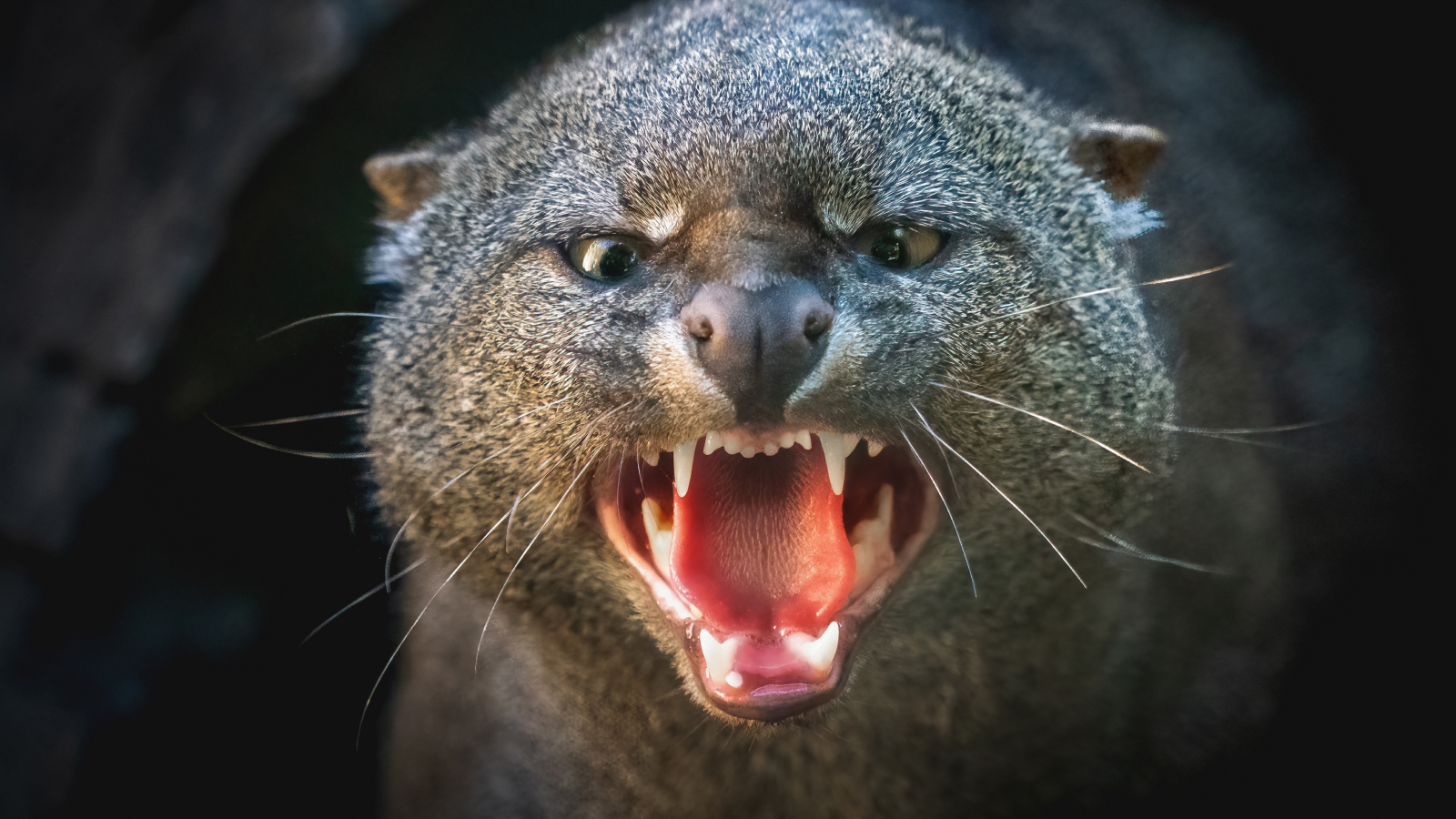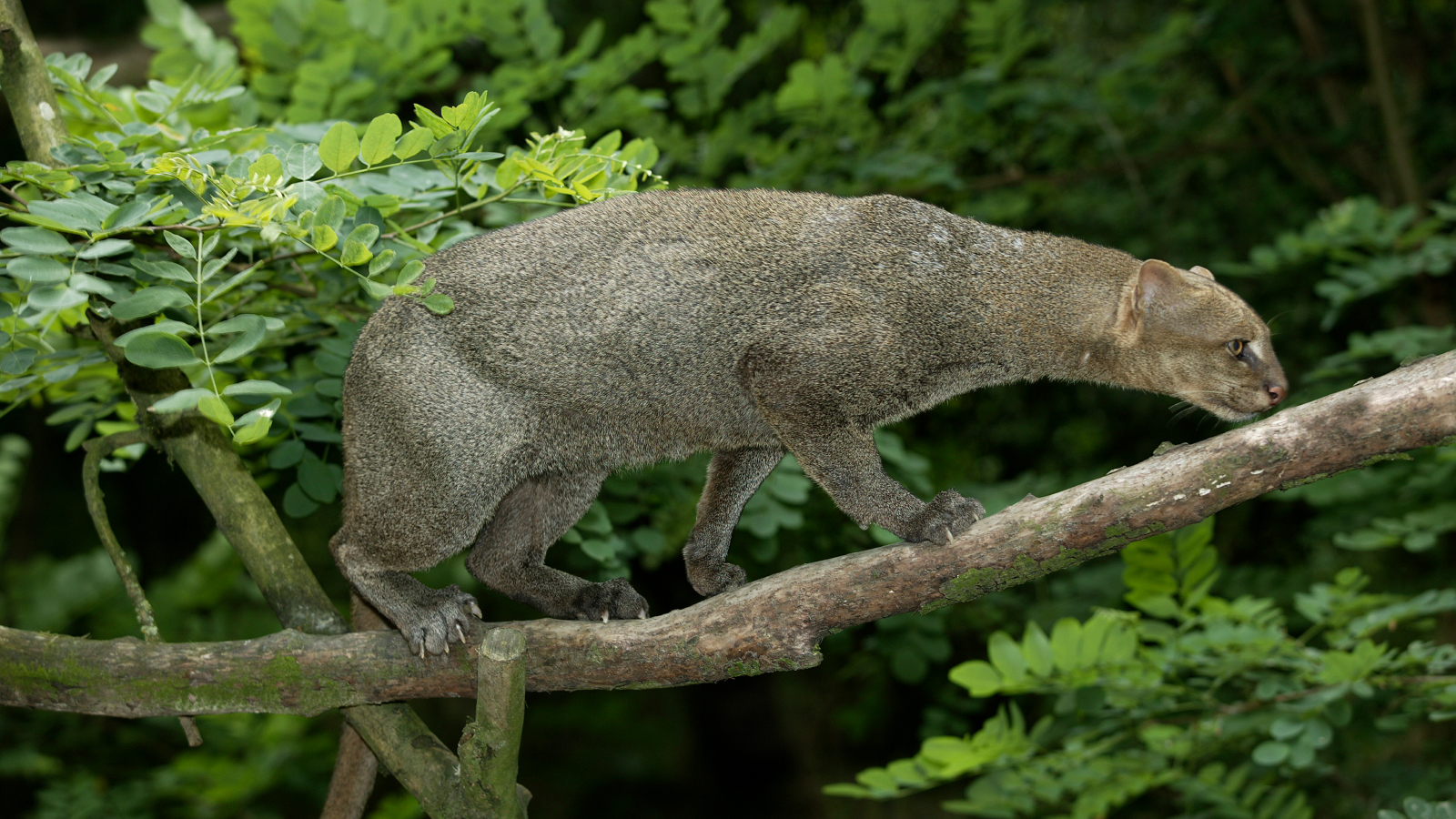
Name: Jaguarundi (Puma yagouaroundi or Herpailurus yagouaroundi)
Where it lives: Mexico down to central Argentina
What it eats: Reptiles, birds, frogs and fish
Why it's awesome: Not all predatory wildcats roar; a small feline called the jaguarundi uses at least 13 calls, including purring, whistling and chirping like a bird.
Native to the Americas, jaguarundis have some unusual features — slender, elongated bodies; short legs; and small, flattened heads with rounded ears — making them look more like otters or weasels than cats. They live in lowland areas with dense vegetation to hide in, including in scrublands, swamps and forests.
Despite its name, the jaguarundi isn't closely related to jaguars or even to other small Central American wildcats. In fact, genetic analysis shows it is more similar to the puma, or mountain lion (Puma concolor), despite the jaguarundi having a different physical appearance — including being much smaller in size. This is why recent studies use the scientific name Puma yagouaroundi, instead of its original genus, Herpailurus.
Related: Male jaguar rivals pair up for years in unexpected bromances
The jaguarundi diverged from the puma into its own species between 4 million and 7 million years ago. Yet jaguarundis are much, much smaller than mountain lions: The latter weighs 75 to 158 pounds (34 to 72 kilograms), whereas, at 7 to 15 pounds (3 to 7 kg,) the jaguarundi is barely larger than a housecat.
Both wild and domestic cats make a range of noises, depending on what they are trying to tell others. Most domestic-cat owners have heard a growl, hiss or purr — and big wildcats such as lions, tigers and jaguars do the same, to a degree.

But the jaguarundi has a much broader vocal repertoire than other cats. In fact, it can make at least 13 different noises, including purring, screaming, whistling, yapping, chattering and a peculiar bird-like chirping.
It's not known exactly how or why jaguarundis make so many different noises. They are extremely reclusive and rarely seen in the wild. However, researchers who have observed the animals in captivity have witnessed them using these noises to communicate, mark their territory and find mates.
Biologists Balazs Buzas and Eszter Gulyas, who worked at the Rare Species Conservation Centre in Kent, England, raised jaguarundi cubs and observed their calls.They found jaguarundis used a "short whistle" when seeking attention, which was responded to by others with a single "peep." They emitted a "long whistle" or chatter to greet one another, and female adults purred to call their kittens. As with domestic cats, a long purr signaled contentment, and a loud hiss or spit meant to stay away.







